
'It's our home! Why would we leave?': How Palestinians in Masafer Yatta are resisting Israel's expulsion attempts

Desert yellow hills extend to the horizon on both sides of a narrow paved road, as thin drops of a light rain shower the front glass of the car. Small groups of dozens of one-story brick houses are scattered along the road, many of them unfinished.
“This is an Israeli road that leads to the settlement chain which separates the firing zone from the rest of the West Bank,” Ali, a 24-year-old local activist explains. “It is one of the few paved roads in this area,” he points out.
The long drive is part of an unusual journey to Masafer Yatta. An agglomeration of 12 Palestinian villages in the southern Hebron hills, extending over some 36 square kilometres.
Visitors arrive at Hebron city, from where public transportation takes them to their last accessible station; the town of Yatta, to the south. From there, locals, often activists, offer a drive to the first village in Masafer Yatta, Twani, already in area ‘C’, under strict, direct military Israeli control.
The car drives the lonely paved road past Twani up a hill, on which the industrial, almost identical houses of Israeli settlers can be seen from a distance. “We will try to reach the firing zone, where local residents are holding a protest right now against illegal Israeli settlement expansion on their lands,” notes Ali. “We hope the Israeli military will let us through their checkpoint,” he says.
Masafer Yatta has repeatedly made headlines in recent months, mainly because of the ramp-up of Israeli demolitions against Palestinian houses and property. However, The story of Masafer Yatta began more than 40 years ago.
A large part of the area was declared a ‘firing zone’ by the Israeli army in 1980, exposing Palestinian inhabitants to constant demolitions and imminent expulsion.
In May 2022, the Israeli supreme court ended a 20-year-long legal battle by rejecting a petition, presented by the inhabitants of the 12 villages, against the military declaration of their lands and homes as a ‘firing zone’.
Then, in early January, the Israeli government notified the Palestinian Authority’s liaison office that eight of the villages of Masafer Yatta will be soon evacuated for military drills. Since then, Palestinian inhabitants are bracing for a mass expulsion at any moment.
Ali’s car stops at the hilltop, behind a line of Palestinian cars. To the right, the houses of the Israeli settlement of Karmael can be seen meters away, behind a double fence of metal wire. Ahead, a patrol of Israeli soldiers questions passengers of each car, one by one, while one of the soldiers aims his rifle from behind a cement cube, towards the line of vehicles.
“Where are you from?” asks the Israeli soldier. “From here,” replies Ali, who is a resident of the village of Touba, across the checkpoint. The two have a brief discussion before the soldier spots The New Arab reporter’s camera. After asking the reporter where he comes from, the soldier orders the car back where it came from.
Area ‘C’, including Masafer Yatta, covers more than 60% of the West Bank’s area. The classification of the territory as areas ‘A’, ‘B’ and ‘C, was agreed upon between Palestinian and Israeli negotiators at the Osle accords and subsequent agreements in the 1990s. It was supposed to be a temporary arrangement to end in 1999, with a full Israeli withdrawal from the West Bank and the establishment of a Palestinian state.
That conclusion never happened, as negotiations between the two parties collapsed in the year 2000, and the second Palestinian Intifada broke out. However, the segregation of the Palestinian territory remained, and with it, the expansion in area ‘C’ of Israeli settlements, was never taken into account in the Oslo accords.
Ali drives back to Twani. The village of 400 people looks like any West Bank Palestinian village, frozen in the early 1990s. The community’s school, built in 1996, during the Oslo negotiations period, is one of the very few in Masafer Yatta. Most of the houses are old, and many streets are not paved.
At one house, a small group of international journalists debate the Palestinian cause and the Ukrainian war, as they wait for the protest to end to try and cross into the firing zone.
Outside, a Palestinian woman yells at her 10-year-old son who plays with a hairy, large domestic dog that had just run away from an Israeli settler. “Leave the dog alone, we don’t need any trouble with the Israeli army,” she orders the child.
In all of area ‘C’, Palestinians are forbidden from building without special construction permits given by a special body of the Israeli army, known as the ‘civil administration’. In theory, these permits are given in a few limited zones of area ‘C’.
In reality, Palestinians have to spend large amounts of money in legal procedures, over several years, to request a permit, while more than 98% of permit requests are rejected. Any new Palestinian structure without a permit in area ‘C’ eventually receives a demolition order. In Masafer Yatta, this policy threatens almost the entire Palestinian population of the area.
According to the UN Office of Coordination of Humanitarian Affairs - OCHA, 214 Palestinian households and their livelihoods are threatened with forcible transfer and demolition in Masafer Yatta. These include, according to OCHA, 1144 Palestinian men, women, boys and girls, out of the nearly 2000 inhabitants of the area.
Ali drives back across the hilltop, near the Karmael settlement’s fence. The Israeli army’s checkpoint is no longer there, and Ali’s car arrives at the outskirts of his village, Touba.
Riyadh, a 22-year-old inhabitant welcomes visitors into the main room of his home. He walks ahead, down a few cement stairs through a small door placed under the natural rock formation of the hill, into a large cave.
“I was born at the clinic in Yatta, but I grew up and lived all my childhood here, in Touba,” Riyadh tells his visitors. “As our family expanded, my parents moved to Yatta, but me, my wife, my brother and my sister continue to live here,” he points out.
The cave’s ceiling, covered with black smoke stains, holds a cable line that ends with a lamp bulb. In the middle of the cement floor is a square hole that the family uses as a cooking fire pit. “My mother gave birth to me right here, before we made the floor as you see it," says Dalal, Riyadh’s 26-year-old sister, while pointing at the firepit.
Because building new structures is forbidden, Palestinian families in the firing zone in Masafer Yatta started to accommodate caves in their lands, turning them into living rooms and kitchens, as extensions to the already-existing built structures of their homes, which are regularly subject to Israeli demolition.
“We used to have a two-room house just outside, and we had solar panels for electricity,” points out Riyadh. “That was before the occupation demolished it,” he recalls the demolition of his house in March 2019.
“The civil administration had given us demolition notice a week earlier, then one morning we saw the military vehicles driving towards us from far away, and with them came a bulldozer,” remembers his sister Dalal.
“I was sleeping right here in the cave, and my brother was sleeping on the other side when an Israeli soldier woke us up pointing his rifle at us,” says Riyadh. “He searched the room, then arrested my brother and ordered me out."
Dalal continues, “The soldiers removed the solar panels and loaded them to a truck, then the bulldozer tore down the house and the water tank as we watched. They released my brother the same day, but ordered us not to come back," she notes.
The family made it back to their home five months later, with the help of local activists who volunteered to build a new room and the installation of a small power generator to light the cave. “The new room already has a demolition order, and we might be expelled at any moment,” says Riyadh.
Riyadh and Dalal’s home is located on a hill east of Touba, a few minutes away from the unpaved road that leads to Twani. The majority of villages in the fire zone are further to the south, where dozens of families live, practically isolated from the rest of the world, but close enough to the attention of the Israeli military and judiciary system.
In 1999, the Israeli army expelled some 700 Palestinians from the ‘firing zone’ and demolished or confiscated their property. A few months later, the Israeli supreme court issued an interim decision allowing Palestinian inhabitants to return. The decision was not final, and inhabitants remained at risk of expulsion.
In 2012, the Israeli army presented a petition to the Israeli supreme court, claiming the right to expel communities from the area, while giving them access to land for grazing, only on weekends and Jewish holidays. Human rights groups continued to press against the army’s petition, delaying a final ruling and providing fragile, temporary protection for Palestinian communities.
That protection ended in May 2022, when the Israeli supreme court ruled that there were no legal barriers to expelling the people of Masafer Yatta. The ruling was based on an argument made by the Israeli government that Palestinian inhabitants had not permanently lived in Masafer Yatta before the declaration of the area as a firing zone.
"What the Israeli government pretends to ignore is that the people of Masafer Yatta are owners and property holders of their lands,” points out Ali, as he makes his way through a rocky hill overlooking a ploughed land.
“For generations, the people here have cultivated these lands with barley for their livestock, alternating their living place between the villages and their grazing lands depending on the season,” he says. “It’s just their way of life. These lands are their homes and their livelihood,” he stresses.
The rocky hill that Ali walks is the only way from Touba to the neighbouring village of Sfay, deep inside the firing zone. “There is no road because the occupation doesn’t allow us to build one,” notes Ali.
The lack of roads, signs or any kind of infrastructure marks a striking contrast with the Israeli settlement of Karmael, with its American-suburb-like houses surrounded by gardens and trees. The landscape makes it difficult for new visitors to guess that this is a Palestinian-inhabited area. In a way, Palestinians in Masafer Yatta just don’t exist on Israel’s maps.
In 2020, Masafer Yatta was also excluded from the proposed map of a ‘Palestinian State’, as part of the US Trump administration peace plan, dubbed ‘Deal Of The Century’.
It was seven months after Trump’s plan was announced that the Israeli government argued before the Israeli supreme court that the people of Masafer Yatta had not permanently lived in their lands before it was made a firing zone. Then, Israeli forces began to escalate demolitions against Palestinian villages in the firing zone.
“The so-called Deal Of The Century was a green light for Israel to empty Masafer Yatta and the Jordan Valley of Palestinian communities,” Khalil Tafakji, the leading Palestinian expert on Israeli settlements and head of the maps unit at Jerusalem’s Orient House, tells The New Arab.
“Masafer Yatta overlooks the Negev Desert across Israel’s 1948 boundaries and connects directly to the Jordan Valley, which makes it strategic for Israel to control,” argues Tafakji. “Pushing Palestinian communities in Masafer Yatta to leave is a silent implementation of the Deal Of The Century, it is not a legal issue, but a political one,” he stresses.
The political aspect of Israeli policies in Masafer Yatta has always been linked to settlement expansion. In a declassified minutes of a 1979 meeting between the then-Israeli agriculture minister, Ariel Sharon, and the Zionist World Organization’s settlement committee, Sharon is quoted stating that the sole purpose of creating ‘firing zones’ in the West Bank was to make “reserve lands for settlements”. The following year, Masafer Yatta was declared a ‘firing zone’ by the Israeli army.
After one valley and two hills more, Ali leads visitors into the home of Um Sanad, in the village of Sfay. The mother welcomes visitors into a large cave that the family uses as a living room and kitchen, and as a bedroom for all eight children at night.
“We had another house of several rooms that the occupation demolished two years ago, then we accommodated this cave to live in,” says Um Sanad, as she prepares tea on a small stove in the corner of the cave.
For Um Sanad, taking care of her large household is a full-time job, and not an easy one. “I wake up the children before dawn and we all perform the morning prayer, then they go to school and I feed the sheep, clean the cave and then prepare lunch,” she explains, as her eldest daughter holds her eight-month-old baby. “We had to walk one hour in the valley to the road and wait for a car there, just to take the little one to Yatta for vaccination,” says Um Sanad.
Palestinians in Masafer Yatta treat their children and elders’ illness at home, as there is no medical centre nearby, and ambulances can’t reach most villages. Um Sanad says that their neighbours lost a five-year-old child with a heart disease three months ago because they couldn’t take him to the hospital soon enough.
As Um Sanad serves the tea, three of the daughters stand shyly by her side, while her eldest son, Sanad, explains his life in Sfay, laying on the floor: “I love it here, we have fresh air and plenty of space to play,” says the 15-year-old boy, while his younger brother, Anas, hides behind him, avoiding the camera.
“What I don’t like is school, because we have to wake up very early and walk one hour to the nearest road, then wait for a car to take us to school in Yatta,” describes Sanad. “Sometimes we have to walk all the way to school,” he adds.
In late 2022, the people of Sfay built a small school, less than 200 metres away from Sanad’s home, with the help of activists. The Israeli army demolished the school in early January, for the third time.
|
“I remember that the soldiers came in the morning, as we were in class, and locked us all inside,” recalls Malak, Sanad’s older sister. “Then we began to jump out of the window, and one female soldier pushed me and hurt my arm, then they pushed us all away from the school, and we watched as the bulldozer destroyed it,” she goes on.
“We all helped build the school,” notes the mother. “My 10-year-old Anas was carrying buckets of construction material all day, to the point he didn’t come home for lunch," she says.
“I liked our school here in Sfay, I miss it,” adds Sanad.
Sanad and his siblings lead visitors to the rubble of their school, where he and his sister Malak explain enthusiastically; “Here was the board, and we sat here, facing it,” explains Malak.
“Over there was the window where I helped other kids out before the demolition,” says Sanad, as younger children play amidst the rubble.
The third demolition of the school of Sfay in early January was one of the rare occasions on which Masafer Yatta was covered live by most TV sat channels in Palestine.
On the Palestinian national channel, crowds of inhabitants and activists were seen arguing with Israeli soldiers as the demolition took place. One woman who looked older than the rest stood out, as she addressed the Palestine TV camera.
“I said to the TV lady that this was our land and that we will never leave, even if they come to demolish our homes and schools every day,” Suaad, the 58-year-old woman tells The New Arab while serving tea on the floor of her cave, surrounded by no less than 10 children aged between 2 and 12 years old.
“These are all my grandchildren, and there are more, twenty in total, all born here in our land,” the matriarch explains proudly, as she names her grandchildren, one by one.
“How do we continue to live here?” Suaad repeats the question addressed to her with an astonished gesture. After a brief moment of silence, she states; “It’s our home! Why would we leave?”
“I was born here, and my father, who died at 85, was also born here, and his father who died at 80 was also born and lived all his life here. How old is the oldest Israeli settlement in these hills?” exclaims Suaad with a defiant tone.
“I will die one day, but these little ones will bury me right here and continue to live in my place after me,” she adds, as her grandchildren run out of the cave to join other children of the community playing outside, while the sun sets on the yellow, desert hills extending to the horizon of Masafer Yatta.
Qassam Muaddi is The New Arab's correspondent in the West Bank. He is a Palestinian journalist and writer who has covered Palestinian social, political and cultural developments in Arabic, French and English since 2014. He has co-published two books in French 'Terre Sainte, Guerre Sainte?' and 'Taybeh: Dernier village Chrétien de Palestine'. In 2021, he started the '7ara 36' blog in Arabic, featuring human stories from Palestine.
Follow him on Twitter: @QassaMMuaddi
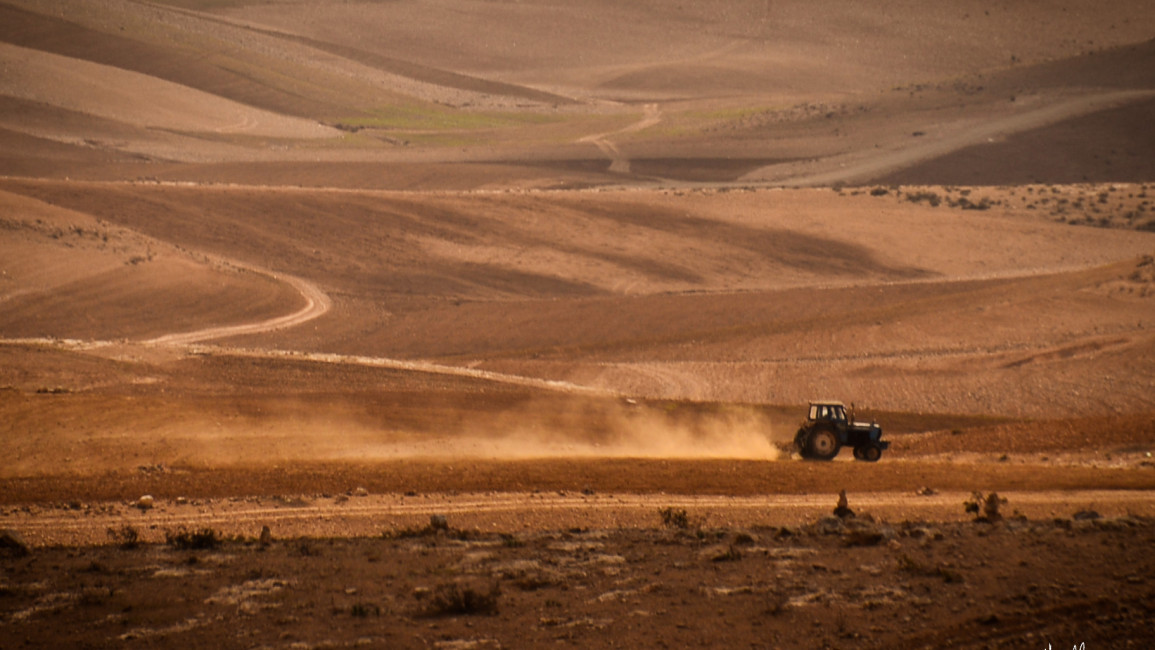

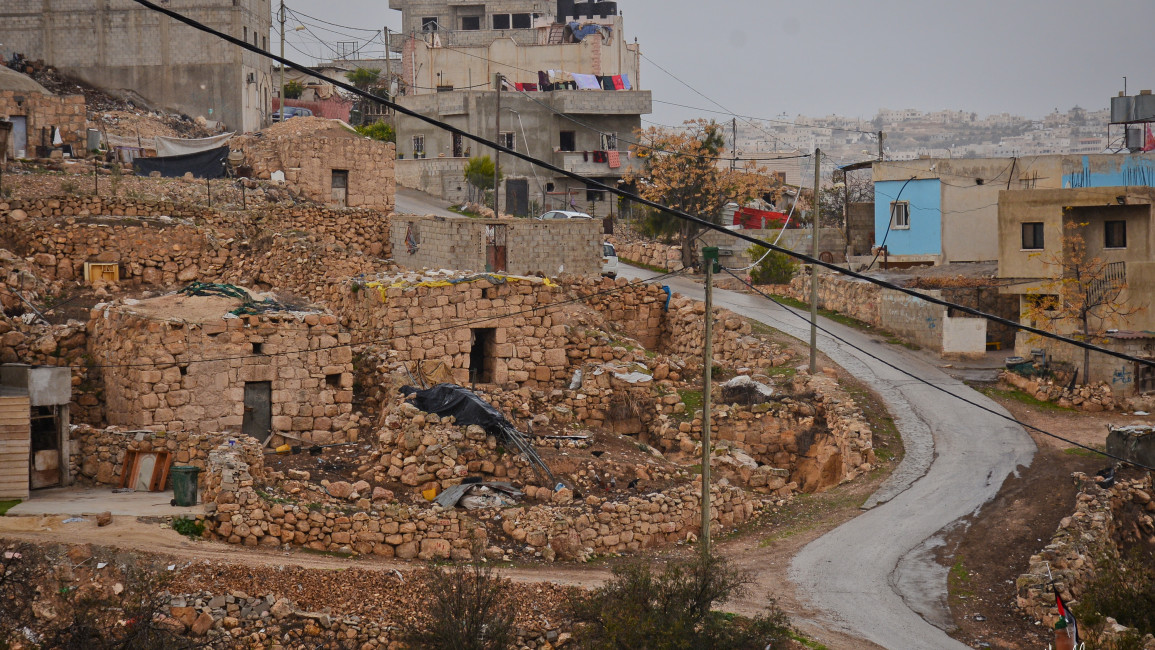
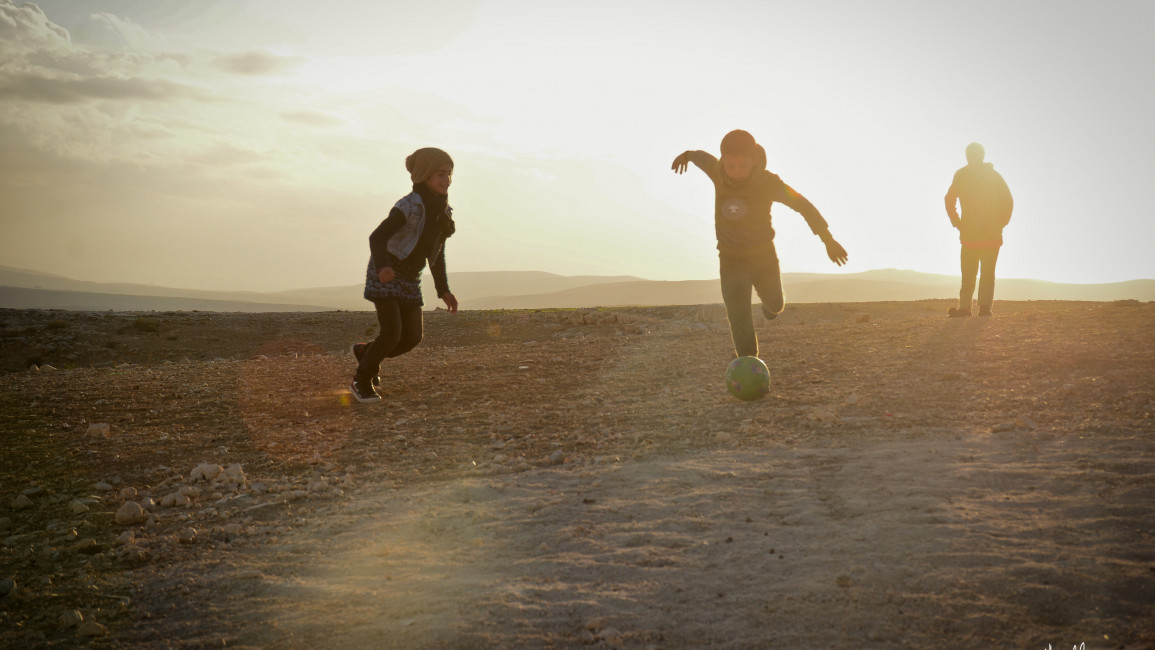
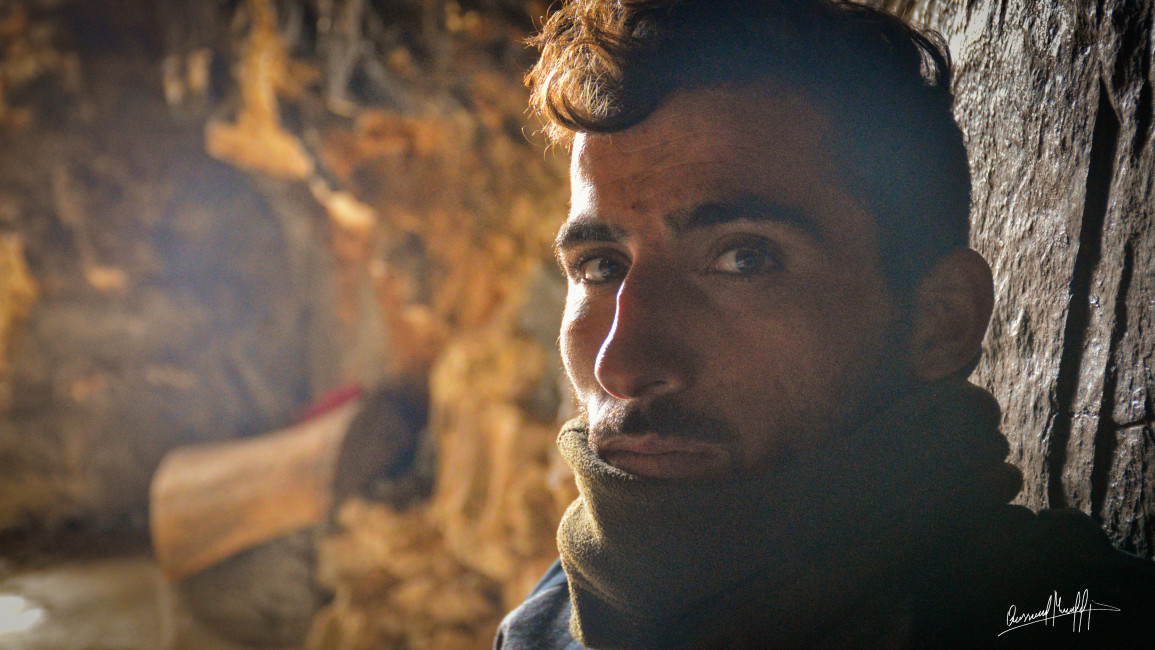
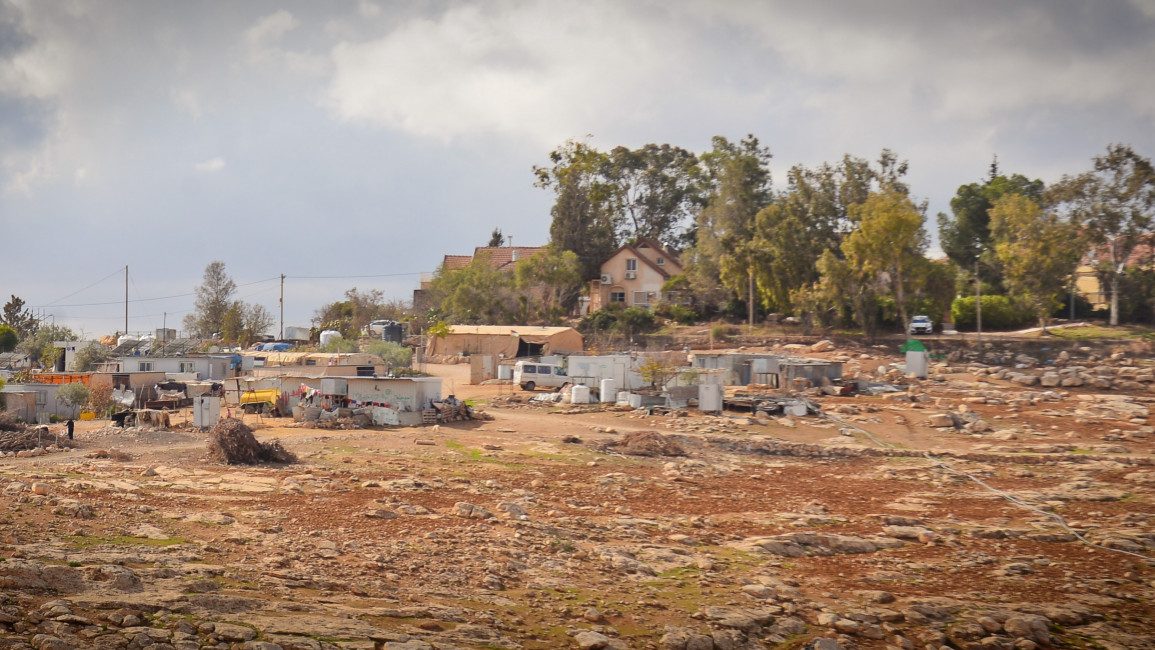
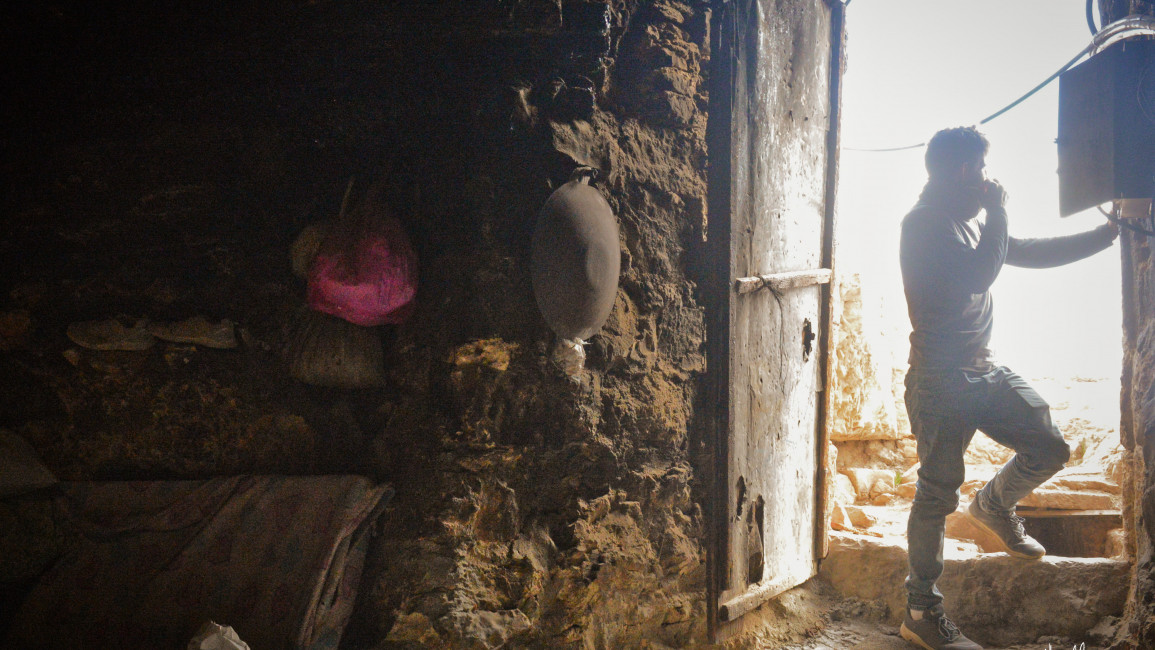
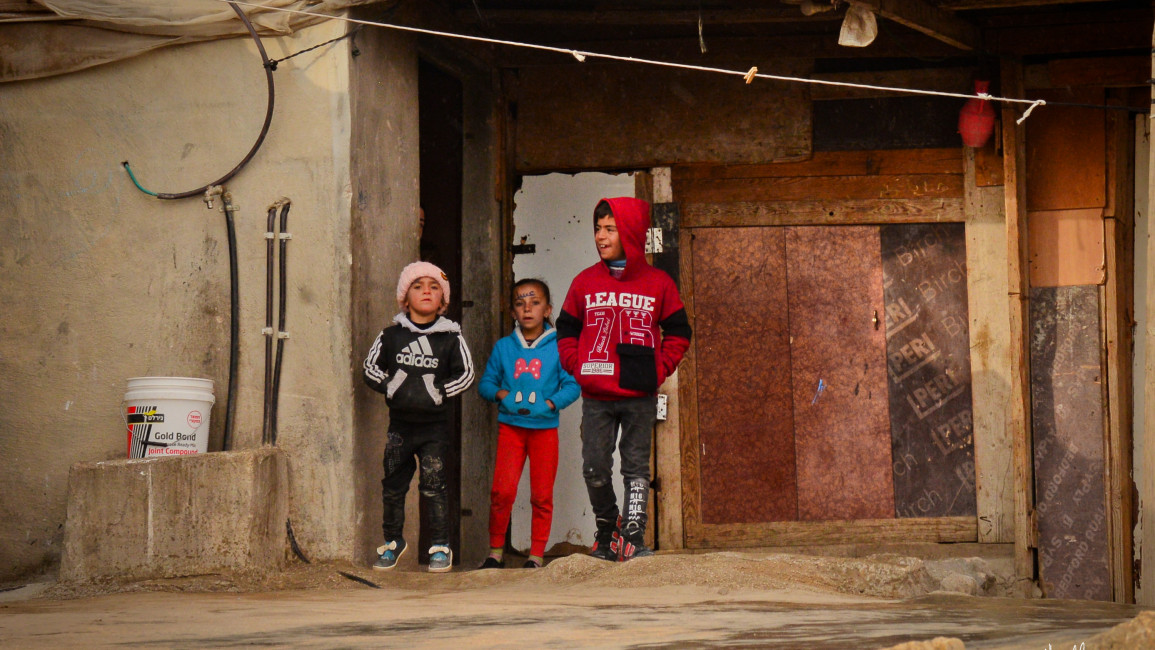
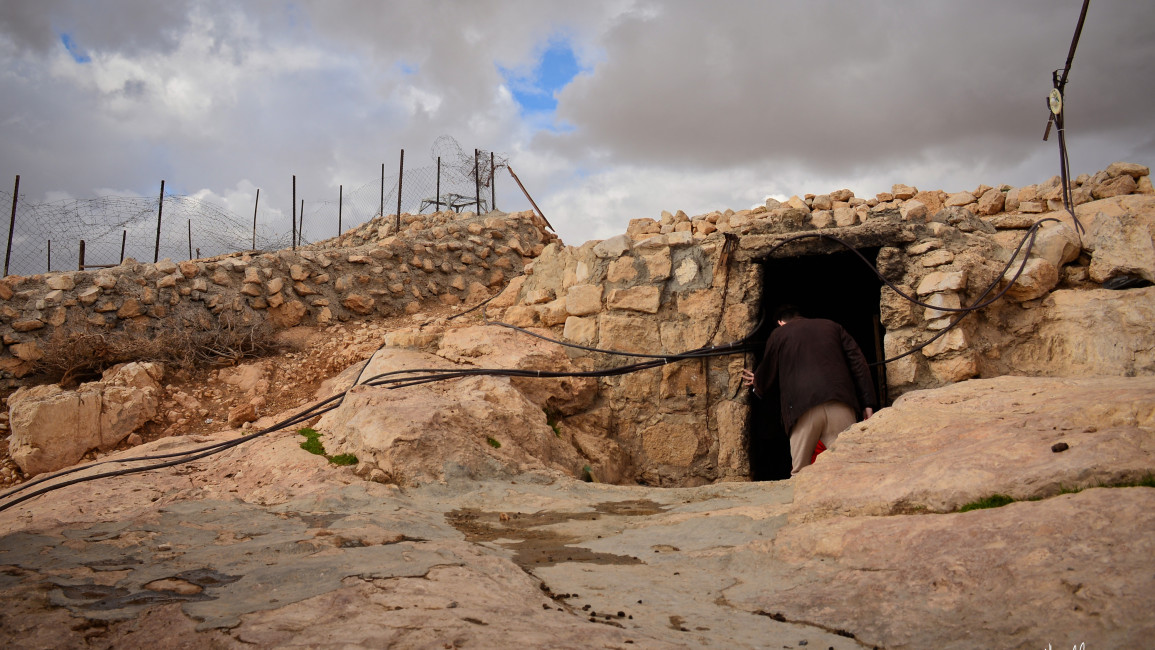
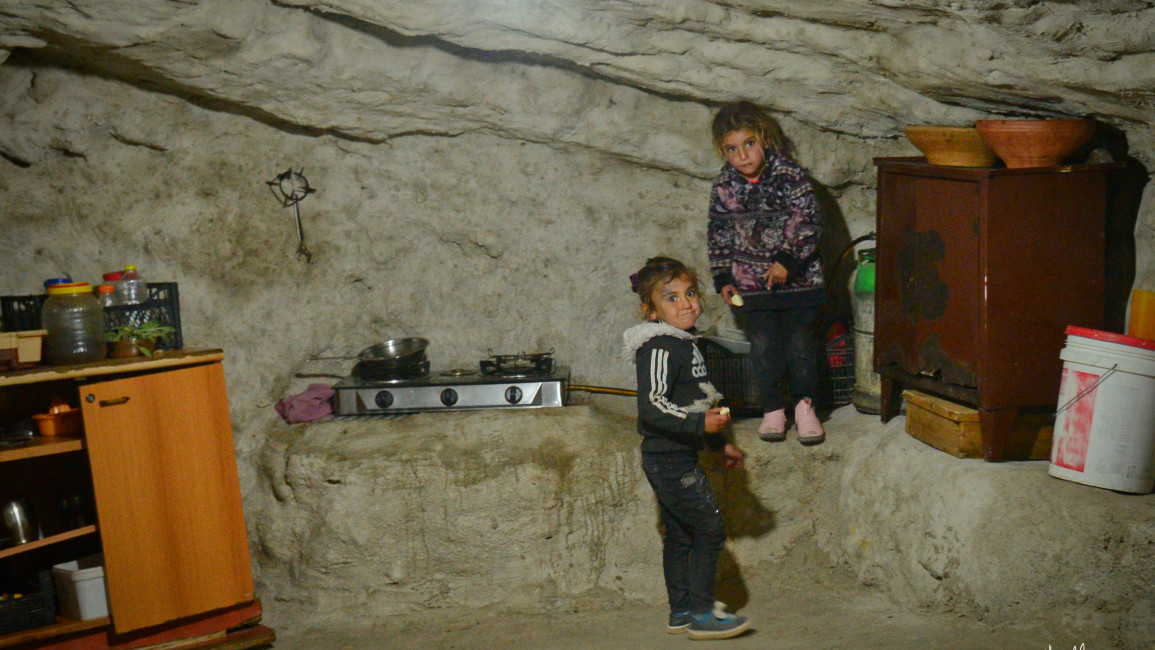
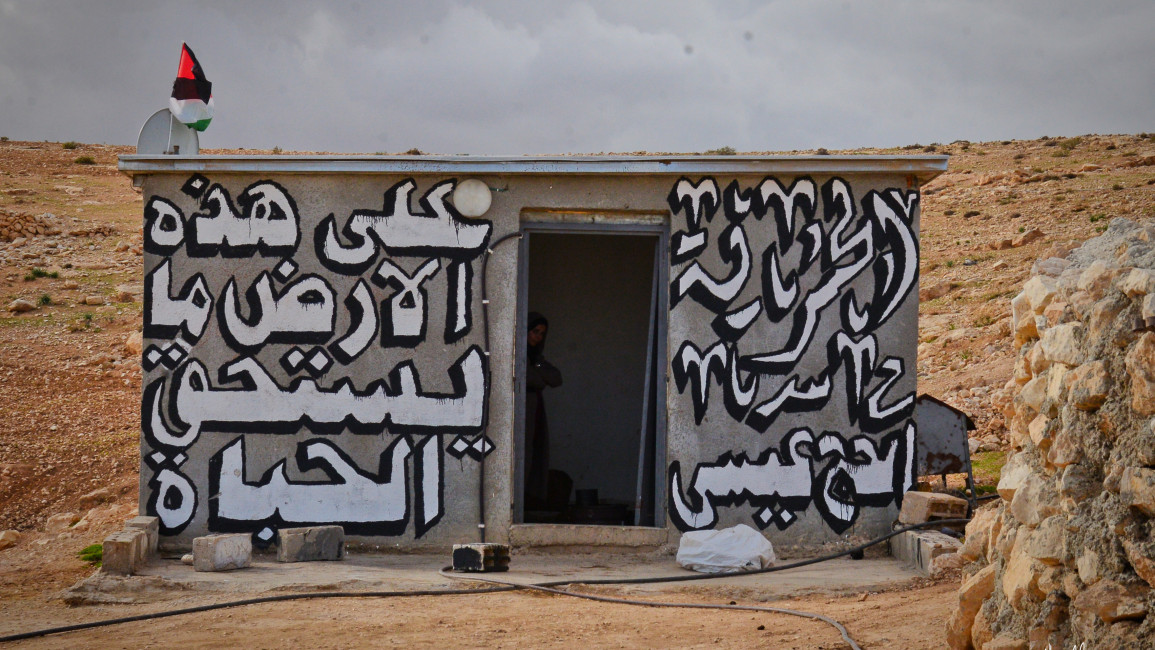
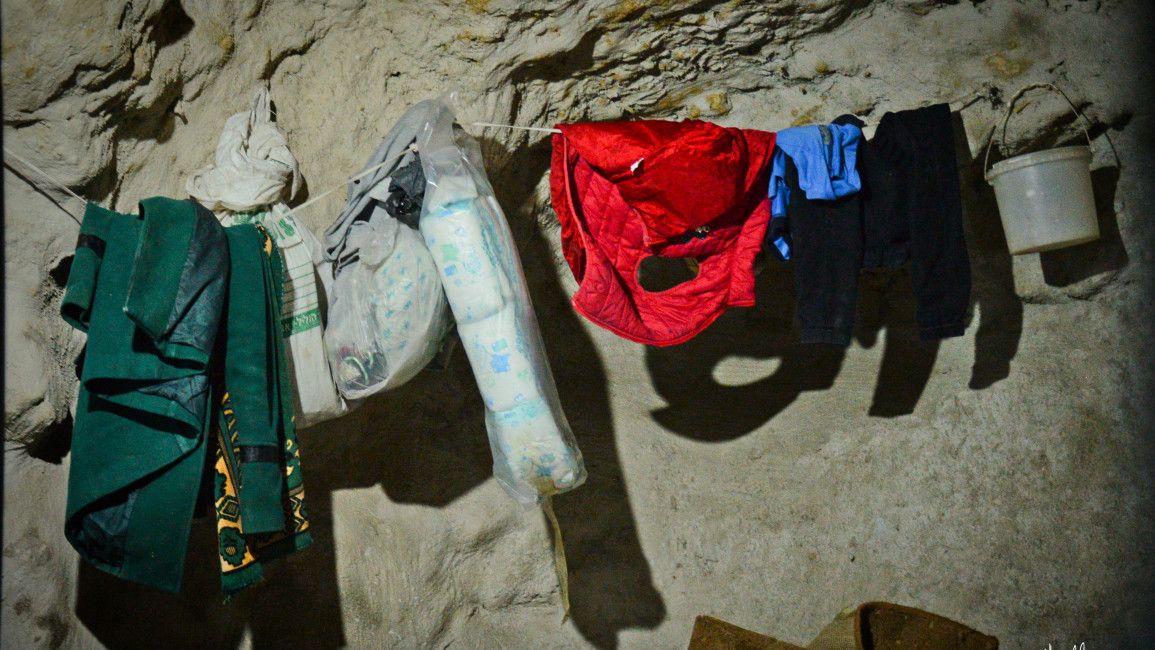
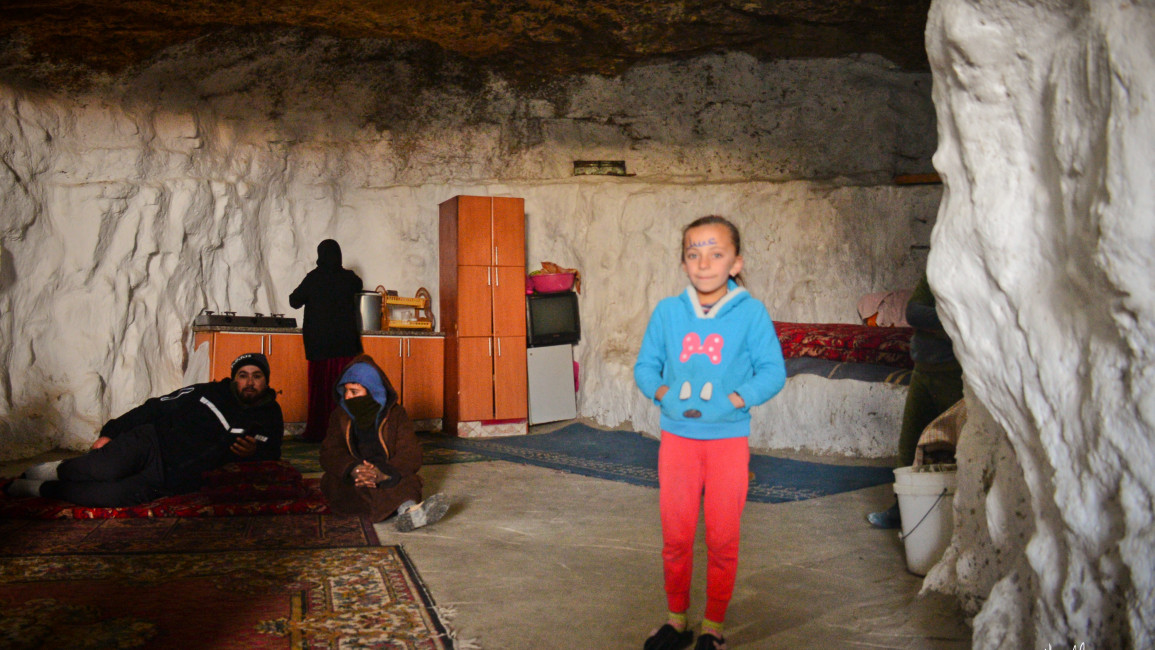
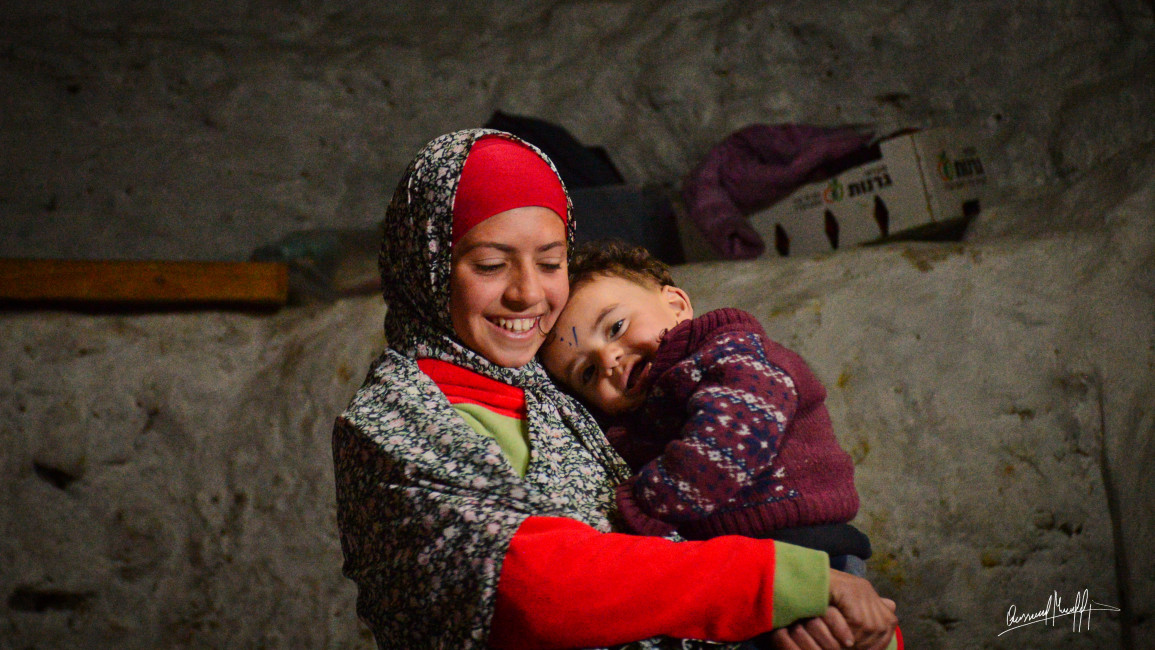


![President Pezeshkian has denounced Israel's attacks on Lebanon [Getty]](/sites/default/files/styles/image_684x385/public/2173482924.jpeg?h=a5f2f23a&itok=q3evVtko)



 Follow the Middle East's top stories in English at The New Arab on Google News
Follow the Middle East's top stories in English at The New Arab on Google News


